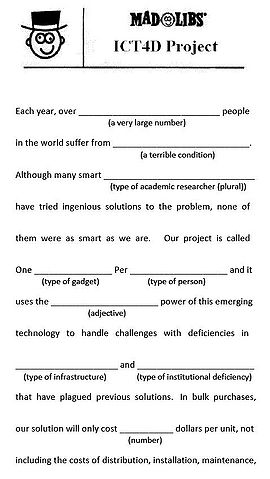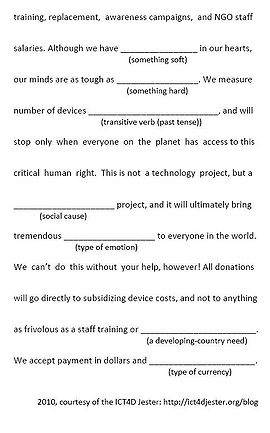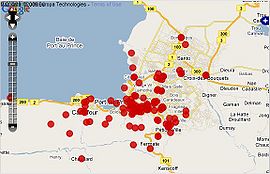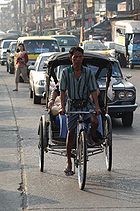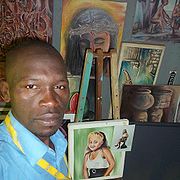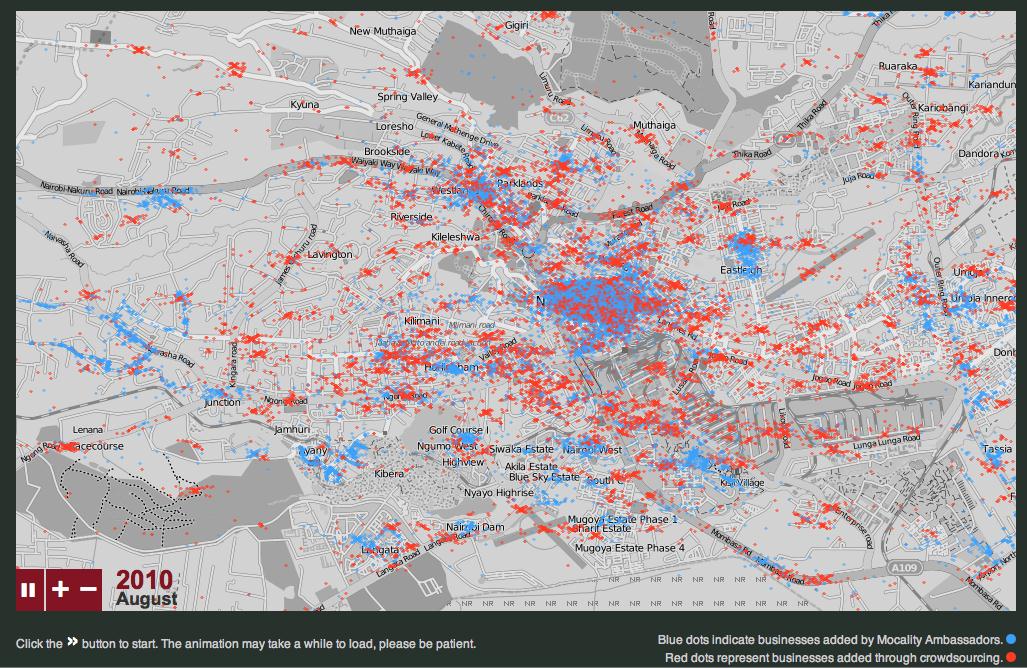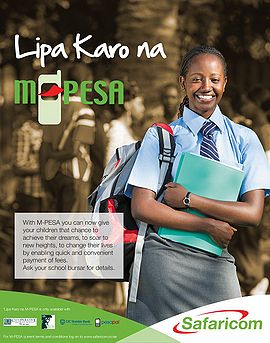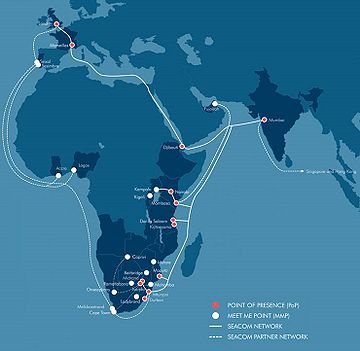ICT4D and Enterprise Development
From IT
Information Communication Technology for Development (ICT4D) is a vast field of research and practice that incorporates technology as an engine for development in, usually, impoverished areas of the world. ICT4D Enterprise Development is the use of information communication technologies in creating and utilizing sustainable economic conditions for business development.
Contents |
Introduction
Internet technology has the ability to improve the lives and capabilities of poor and impoverished people. It can be done through Information Communication Technology (ICT) used within a development focus called ICT for Development. ICT4D is a constantly evolving multidimensional field of work and study that incorporates areas such as technology, sociology, psychology and international development for the purpose of bettering lives around the world. ICT4D projects can be seen all over the world implemented into five main areas: education, health, governance, rural development and enterprise development(Unwin p.3).
ICT4D Sectors
Education
For education ICT4D is used not only to deliver learning to as much of the population as possible but it is also used to deliver higher quality education to all areas using better resources and training. Education is a cornerstone for the bettering of human society and the use of new technology tools empowers students to learn using the latest techniques and software tools such as the One Laptop per Child project and the newly developed $35 Aakash tablet. These inexpensive and sustainable technologies enable learning to take place anywhere through solar and manual power, open source software and resilient well designed hardware(2).
Health
ICT4D in Health has the potential to have positive impact on each aspect of a health care system. Improving health communications and management of information ICT4D projects can help control diseases, keep better patient records, bring in health knowledge and aidwork to reducing poverty and bolster development(3).
Government
eGovernment and ICT4D is the use of innovations in communication technology to enhance the services of the public sector. It can be divided into administration, citizen interaction and the building of a better society(4). Mobile phones have played a significant role in ICT4D in the developing world because of their ability to communicate with citizens and create closer societies.
Rural Development
Rural Development initiatives through ICT4D are a way to create a better infrastructure and better way of life for those outside of populated areas. Farmers and agriculturalists make up 86% of the poverty stricken people living in rural areas (Unwin – p.322). Communication with the outside world to attain knowledge and resources to better their lives is needed for the improvement of these marginalized people. LifeLines India is a program launched in 2006 by British Telecom and Cisco that enables farmers in rural areas to call a help line with questions they have about agriculture and animal husbandry. Questions are submitted via voice mail and responded to within 24 hours via voicemail that the farmer can retrieve. While the rural farmers pay a small fee for this service the monetary gains they make from the knowledge keeps this ICT4D project developing and expanding to more and more villages (Unwin – p.162).
Development of enterprise and business through ICT4D has been seen heavily with the assistance of the global telecommunications industry. The World Bank Reports that $472 billion dollars were spent between 1990-2005 by private investment into developing countries. This is $115 billion dollars more than on investments in water and energy combined (Unwin - p. 180). The aim was to connect the billions of people without telephone or internet to the rest of the world. It is estimated by the end of 2012 there will be 732 million Africans (out of 1 billion) connected via mobile phones(5). This incredible figure has given rise to personal and business success, development of new innovations using the mobile phone and internet technologies and the ability to attain knowledge and resources in impoverished countries.
The successes of ICT4D in the past has not been because of an understanding and implementation of a technology but of the understanding of a problem and the sustainable solution applied to it(Unwin - p.119). "Such initiatives will fail if such services are not developed in response to the needs of those for whom they are intended" (Unwin - p.165). The future of ICT4D is more about human development; ICT4D is merely a tool for something else to happen.
ICT4D Failures
The World Bank has invested $4.2 billion between 2003 and 2010 into ICT projects and received a much as a 70% failure rate on some of its initiatives. This figure only represents 1% of the total $400 billion plus from the private sector that has gone into telecommunications for Africa(6). Mobile cell phone subscriptions have achieved incredibly high growth but universal access for Africa is still very poor.

Much has been learned about what works and what does not work in ICT4D over the years. Over the decades much time, money, and energy has been wasted on now defunct ICT projects in impoverished countries. Critical and insightful blogs, such as ICT4D Jester, exist to add updates and commentary on the current situation of ICT4D. On the right side of the page an ICT4D Mad Lips by "the Jester" has been included.
Dr. Clint Rogers, organizer of the first EU funded Consortium of Universities in ICT4D, produced the follow list of "Reasons Why ICT4D Projects Fail" after interviewing citizens, scholars, workers and the impoverished at the Poverty Reduction Summit in Ghana 2011.
Top 7 Reason ICT4D Projects fail(7).
- Results not directly tied to improving economic condition of end user
- Not relevant to local contexts, strengths, or needs
- Not understanding infrastructure capacity
- Underestimating maintenance costs and issues
- Projects supported only by short-term grants
- Solutions are not looking at the whole problem
- Projects built on condescending assumptions
Dr. Rogers results point to a lack of understanding in the environment in which ICT4D is intended for. His interviewees from around Africa also stake their blame in narrow-minded focus of technology by leaders of ICT4D projects rather than the needs of beneficiaries of the project.
Infodev
Infodev is a partnership program run by the World Bank in order to promote global innovation, technology and entrepreneurship. It works within the Financial and Private Sector Development Network of the World Bank Group. Their main goals are job growth, sustainability and employment in developing countries(8). They work with governments and small-medium sized enterprises (SME’s), particularly in the technology section, to improve job skills, promote financial and market regulation policies, and foster development opportunities through innovative solutions in emerging market economies.
Their focus is on three main themes:
- INNOVATE – Innovation, Entrepreneurship and Growth to achieve maximum impact of contributions from the private sector. Their actions are in business incubation for ensuring growth and Innovation and competitiveness for better competition in the global business world
- CONNECT- To enable access to all technologies by all people. Their actions foster regulation, expansion of technology available, and promotion of research
- TRANSFORM- Field work, research and analysis of ICT for Education, Governance, Health and Livelihoods of the Poor. Their actions include development of tools and planning for initiatives
Infodev works with project stakeholders to implement technological innovation programs that are flexible in approach and pragmatic in design. They function as a "cutting-edge" research facility producing tool kits, seminars, surveys and the renowned Telecommunications Regulation Handbook (8). Infodev also serves as a neutral party on their established platform for knowledge sharing and global dialogue. They bring together donors and practitioners to discuss organization initiatives, like business incubators and ICT in education.
Topics in ICT4D
Crowdsourcing
Crowdsourcing is the use of many individuals to produce results that would normally be done by a single individual over a great amount of time. Crowdsourcing is typically done online and can be used for profit, where a contributor is paid a fee for services, or for free in cases such as a natural disaster rescue organization. Thanks to the advancement of ICT the amount of data available to us is staggering. This data can be used for a variety of purposes but usually requires filtration to be readable and often time computers cannot make sense of the data.
- For Profit Example
A dog food company may need pictures of dogs wearing flowers. They have over 10 Million pictures of dogs and some of them contain the dog(s) wearing a flower(s). Rather than have a staff member from the company spend years working on this project the company can crowdsource this task out for a small fee, say $0.05 a picture. The crowd reviews each picture and marks the ones with a dog wearing a flower. The results are then sent back to the company.
- Not for Profit Example
The 2010 earthquake in Haiti left rescue workers without a way to find where victims were trapped or injured or a way for victims to alert rescue workers of their whereabouts. Ushahidi, a software tool previous developed to create geo-mapping of violence incidents during a 2008 period of clashes in Kenya, was reprogrammed and outfitted to create geo-mapping for rescue workers and victims in Haiti. Victims, rescue workers, translators, and anyone else who could help was able to submit data via SMS, MMS and through their PC to create a usable map of the earthquake zone. Rescue workers used this crowdsourced data to assist their efforts in locating victims.
Crowdsourcing is not a new topic or even a business idea. Since 2007 Crowdflower has run a business service using inexpensive labor from impoverished nations through crowdsourcing (9). Workers from impoverished areas are paid for their work at higher wages than other jobs in their area. Crowdflower has also incorporated crowdsourcing for profit through games like online sensation Farmville. Crowdsourcing activities are incorporated into the game for the chance to gain Farmville currency for the players and actual real work output for CrowdFlower. Over 500,000 workers from over 70 countries are used by Crowdflower(9). The overall crowdsourcing industry is over $1 Billion annually generated by two hundred plus businesses globally. The use of gamers as laborers is an interesting and productive way to generate crowdsourcing output but the psychology behind the poorest in the world who live in communities where there is over 70% unemployment the satisfaction of working would be a bigger incentive then gaming. Gaming, though, is still an important aspect in any task to encourage continued participation. In terms of labor markets 500 million gamers compared to the 4 Billion impoverished people earning less than $3 a day the impoverished are the larger labor force and the group in a great need(10).
Impact Sourcing
Impact Sourcing employs individuals in impoverished areas, such as Africa, in business processing outsourcing (BPO) for the creation of sustainable jobs and economic development (13). The market for BPO is estimated to be about $100 billion dollars. Most of the BPO performed is done by college educated individuals in cities in China, India and the Philippines (11). The market for the Impact Sourcing market of BPO is around 4.5% and growing because the cost of current BPO is on the rise. Utilizing Impact Sourcing improves economic for both parties involved, however creating “digital sweatshops” is a matter of real concern as business find cheaper and cheaper labor through Impact Sourcing.
"A new report funded by The Rockefeller Foundation estimates that the field of Impact Sourcing, employing socioeconomically disadvantaged people in Business Process Outsourcing (BPO) centers, is currently $4.5 billion and has the potential to reach $20 billion and employ 780,000 by 2015”(12).
Impact sourcing shifts the perspective. “We think the way out of poverty is to view the poor as producers,” says Janah. “And the Internet is probably the most efficient tool we have for tapping this capacity. Because you don’t need roads. You don’t need customs officials who are friendly. You don’t need to manage shipping and delivery schedules. You don’t have to worry about tariffs. The production happens instantaneously and the good ― the knowledge output ― gets shipped instantaneously. This is the first time in human history we can do that”(12).
Cognitive Surplus
Clay Shirky, author of Cognitive Surplus: Creativity and Generosity in a Connected Age, says that we spend the bulk of our time watching TV, which is true. He makes this statement as an ending paragraph to where he speaks of the change brought on by the industrial revolution so now we have more free time. We have time where our brains are not at work (14). The technology we have at our finger tips are socially centered, like twitter and facebook. Shirky say activities like these social media and online games are done by us in our free time because it is interesting or it's good or engaging. This is intrinsic motivation (14). Cognitive Surplus was a major factor in the success of Ushahidi. Without the intrinsic motivation of the developers, the available cognitive surplus of helpful volunteers and the technology that enabled the social connection, the Haitians who were rescued or assisted after the crisis would have gone without. Cognitive Surplus has a roll to play in future global events as well. Future ICT4D technologies and concepts should be developed with this endless supply of Cognitive Surplus as a possible resource in mind.
Informal Economy
The Informal Economy (informal sector) is self-employment that exists outside of government taxation. It is an unregulated entity that enables workers, mostly women, of the economy to earn a living where previously there was none (15). In Africa nearly 80% of the non-agricultural workforce exists in the informal economy while in Latin America it is nearly 60%.“The informal economy has been observed to have more of a fixed character in countries where incomes and assets are not equitably distributed. (15)”
The informal economy does not have the fluctuations a proper economy would have. Improvement of economic conditions in the formal economy do not translate to improvement in the informal economy. The impoverished nations where the informal economy flourishes rely on ICT4D just as much, if not more, than traditional economies. ICT4D and the Informal Economy work together, so workers of the informal economy can use the technology and social aspect of the new technology to promote and operate their businesses.
Successful ICT4D Projects
Mocality
Mocality is Kenya’s largest business directory. It uses mobile apps and crowdsourcing to gather businesses for listing in their directory. It is built for businesses that don’t have enough money for traditional advertising means, so they can promote their business through this service(16).
Services includes :
- SMS, WAP & Web tools (now J2Me, iPhone)
- Businesses can self list
- Geo-coding All business locations
- Map view of business
- Business toolkit:
- Add customers & suppliers
- Send bulk messages (400 free SMS monthly) (but with anti-spam controls)
- Send mobile business card
- Add details (e.g. Menus, Special Offers)
- Website, google optimized (white hat only)
The service is free. Customers of Mocality only have to pay their SMS and data charges. In the future additional pay services will be made available.
Mocality first began acquiring customers manually by physically visiting each store to add them to the new directory. The blue represents businesses added in this manner. Later on they created a crowdsourcing option allowing individuals to upload their, or a known business, to the Mocality directory. Individuals, now Mocality independent agents, are then paid according to verification, picture and the quality of the picture submitted(17). The case of Mocality is a self propagating service that promotes businesses, individuals and the greater community using ICT.
This business is a great success not because of the mobile phone technology used but primarily because the needs of the people of Nairobi were known and specifically addressed. Businesses needed a way to reach potential customers and customers needed a convienient resource to find shops and restaurants. Mobile phone technology is something most Africans subscribe too and is growing at a rate of 20% each year (18).
M-Pesa
Kenya and its thriving mobile community continues to the lead Africa in development of the mobile banking industry(19). Here the mobile phone is revolutionizing cash flow for individuals and business through innovations provided by M-Pesa, a joint venture between Vodacom and Safaricom, and other mobile service carriers. M-Pesa allows mobile phone users to use cash through SMS, make payments, make transfers and administrate their bank accounts. Physical money is becoming less and less important as the ease, security and reliability of mobile banking flourishes in Kenya.“Over 50% of the adult population use the service to send money to far-flung relatives, to pay for shopping, utility bills, or even a night on the tiles and taxi ride home”(19).
This innovation has helped to bring businesses in Kenya, from individuals to SME’s , into a more fast paced and efficient society. M-Pesa was originally developed by the UK government as a micro financing loan program; but the infrastructure took heed and individuals began to use it to exchange money with each other. Farmers can now get prices for goods and then receive payments instantly and simply through their phones, while business owners no longer need to travel to make payments and maintain their spending through mobile phones(19).
Seacom
Seacom is a private organization that has brought high-speed internet to Africa via underwater fiber optic cables. They receive there connectivity feed from Europe and have built a network that extends from Western Africa, down to the South, and back up along the East African coast and now is connected to the Middle East and India. The strategy for Seacom is to give all Africans high speed internet access through strategic investments in innovative social initiatives for high speed broadband(20). Schools and research facilities are the primary investment groups where Seacom has lowered the overall cost of high-speed broadband and increased its delivery speed. Seacom sees itself as a key player in creating the East African “Knowledge Society” of educated and empowered people. Seacom is a “pan-african ICT enabler” which by bringing internet access to areas previously without are allowing for development of future ICT4D.
Previously unavailable, Africa now has:
- High speed web surfing
- Video searching (e.g. Youtube)
- Online education
- Video conferencing
- Cloud computing, gaming
- Business Process Outsourcing (BPO)
- Disaster recovery and backups
- Intra Africa communications (enterprise/government/education)
- Reduction in costs of communications
(20)
Samasource
Samasource is an ICT4D solution to help educated impoverished people, with a specific aim at women, to find employment. Leila Chirayath Janah is founder of this company and the creator of an ideal she calls "microwork"(21). Microwork is a "new way to fight poverty by enabling capable, marginalized people to complete digital tasks in some of the world's poorest places”(22). The idea is that US Tech companies give projects to Samasource, they then divide the project into microwork that can be distributed to individuals across the globe. Once individual work is completed it is compiled by Samasource, verified for accuracy, and returned completed to the US business. When asked if this type of program takes jobs away from Americans Janah’s response was "`Most of the work we do would otherwise go to large, for-profit outsourcing firms in big cities in India and China,’ she says. These companies do not recruit marginalized women and youth, and do not guarantee living wages to their workers”(23).
In exchange, Samasource requires that partners adhere to an ethical code of conduct. They must reinvest at least 40 percent of revenues in training, salaries, and community programs. They must hire workers who were earning less than $3 a day. (Once employed, they generally earn $5 a day, and often more.) To date, the company has distributed $1.2 million in salaries. Seventy percent of its workers are the primary breadwinners in their households and support at least two other people.
CGNet Swara
CGNet Sware is a news source accessible through mobile phone for the rural inhabitants of Central Gondwana in India. Mobile phone users can call up the phone number for insight on news events in the area but they can also use it to record messages/complaints/opinions/editorials. The service came to being though journalist Shubhranshu Choudhary who discovered just how disconnected the inhabitants of this area were from the rest of world during a 2006 Maoist insurgency in the area. The people were greatly affected but had no means to inform the rest of the world (24).
Conclusion
In the next ten years the unemployment rate for the poorest 1 billion people will reach a staggering 70%. Jobs and work opportunities are available now but are not usually reachable by the poorest of the poor. Technology can bring these jobs to the poor and unemployed using the internet. ICT4D projects, some shown in this paper, demonstrate that improvement can be made and change for the better can be achieved through enterprise development.
Employment raises economic conditions for the better. The worst human conditions such as crime, hunger and violence are caused by poor economic conditions and we must use every tool necessary to bring workers closer to the available jobs.
ICT4D and its many facets are making progress in resolving these world issues. Failures do continue but each step is a learning step. New businesses ideas have sprung up from ICT4D roots, like Samasource and M-Pesa, that are enabling marginalized persons to take control of their finances, their homes and their desire to work. New ventures such as these will continue to develop thanks to open source software and improvements in education. The work of organizations like infodev, researchers like Dr. Cliff Rogers and the evolution of technology, as seen with Ushahidi, give us hope that we will one day have the right formula to resolve global poverty.
References
- Unwin ICT4D, Editor Cambridge 2009
- http://aakashtablet.org/
- http://www.infodev.org/en/Project.38.html
- http://www.egov4dev.org/success/definitions.shtml
- http://www.bbc.co.uk/news/world-africa-15659983
- http://www.ictworks.org/news/2011/08/17/great-success-world-bank-has-70-failure-rate-ict4d-projects-increase-universal-acces
- http://iconnect-online.org/blogs/top-7-reasons-why-most-ict4d-projects-fail
- http://www.infodev.org/en/Page.About.html
- http://missionlocal.org/2010/11/crowdflower/
- http://www.tedxbrussels.eu/2011/speakers/leila_janah.html
- http://www.rockefellerfoundation.org/news/press-releases/rockefeller-foundation-foster-impact
- http://opinionator.blogs.nytimes.com/2011/11/03/workers-of-the-world-employed/?scp=1&sq=Workers%20of%20the%20World,%20Employed&st=cse
- http://www.monitor.com/Portals/0/MonitorContent/imported/MonitorUnitedStates/Articles/PDFs/Monitor_Job_Creation_Through_Building_the_Field_of_Impact_Sourcing_6_16_11.pdf
- http://www.wired.com/magazine/2010/05/ff_pink_shirky/all/1
- http://rru.worldbank.org/Documents/PapersLinks/Sida.pdf
- http://whiteafrican.com/2010/06/22/mocality-mobile-business-listings-for-africa/
- http://www.mocality.co.ke/money
- http://web.worldbank.org/WBSITE/EXTERNAL/TOPICS/EXTSOCIALPROTECTION/EXTLM/0,,contentMDK:20224904~menuPK:584866~pagePK:148956~piPK:216618~theSitePK:390615,00.html
- http://www.bbc.co.uk/news/business-11793290
- http://www.seacom.mu/csi
- http://www.forbes.com/sites/kerryadolan/2011/12/14/google-gives-a-boost-to-microwork-nonprofit-samasource/
- http://samasource.org/the-story/
- http://www.forbes.com/forbes/2011/0627/focus-philanthropy-leila-chirayath-janah-google-wealth-creation.html
- http://www.ictworks.org/news/2012/02/28/
